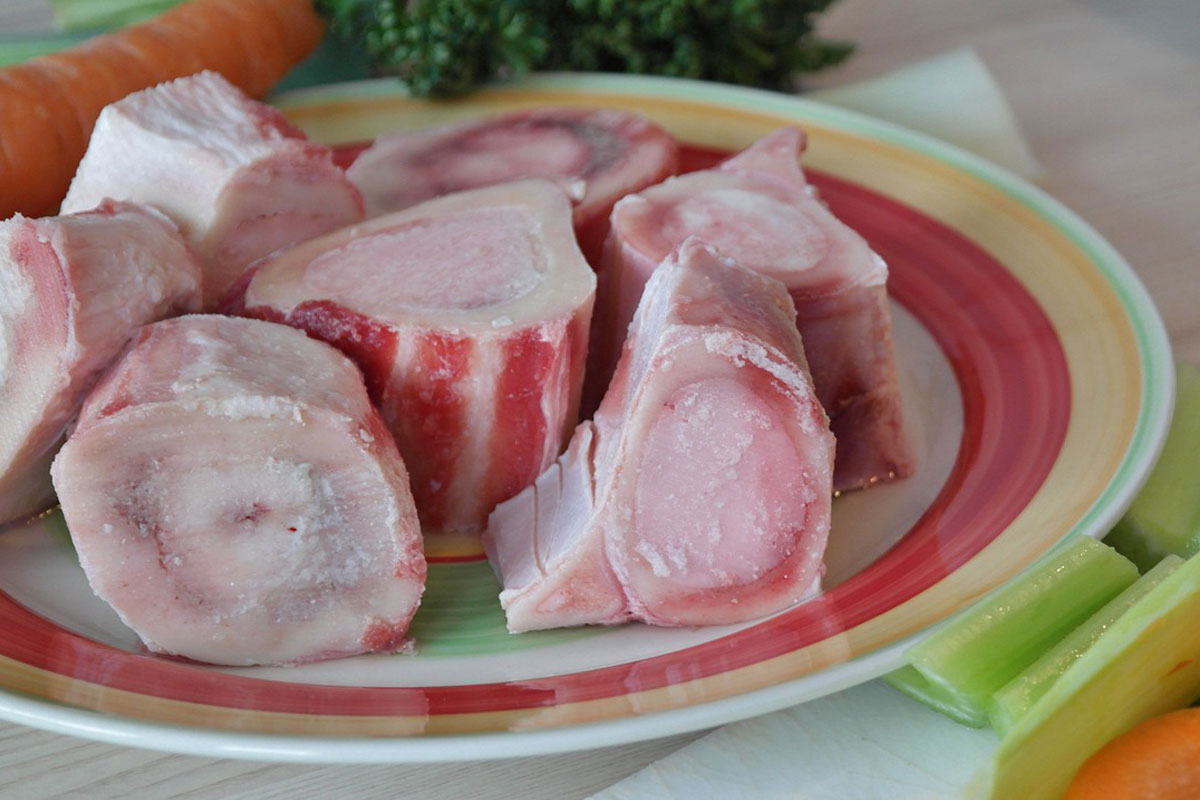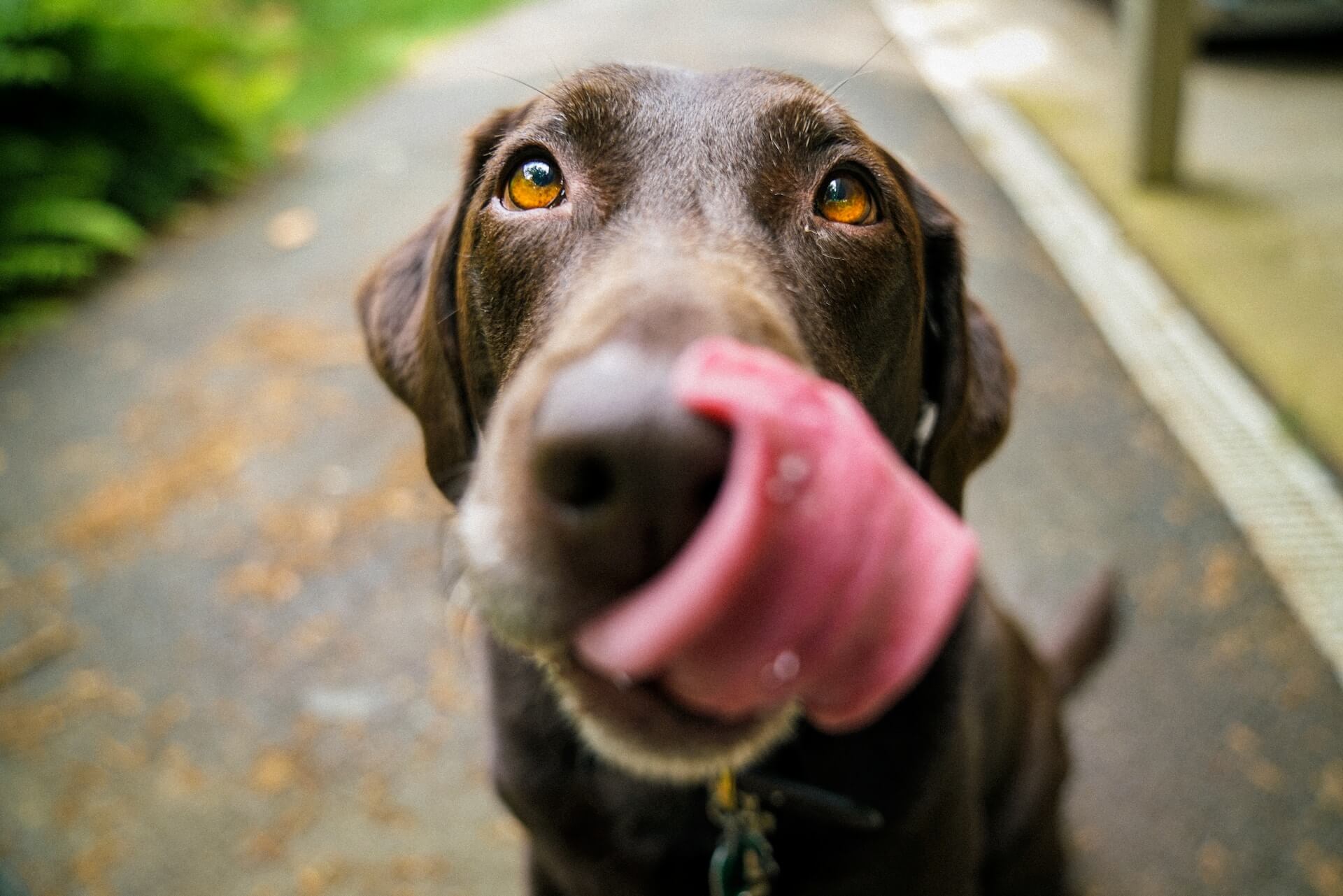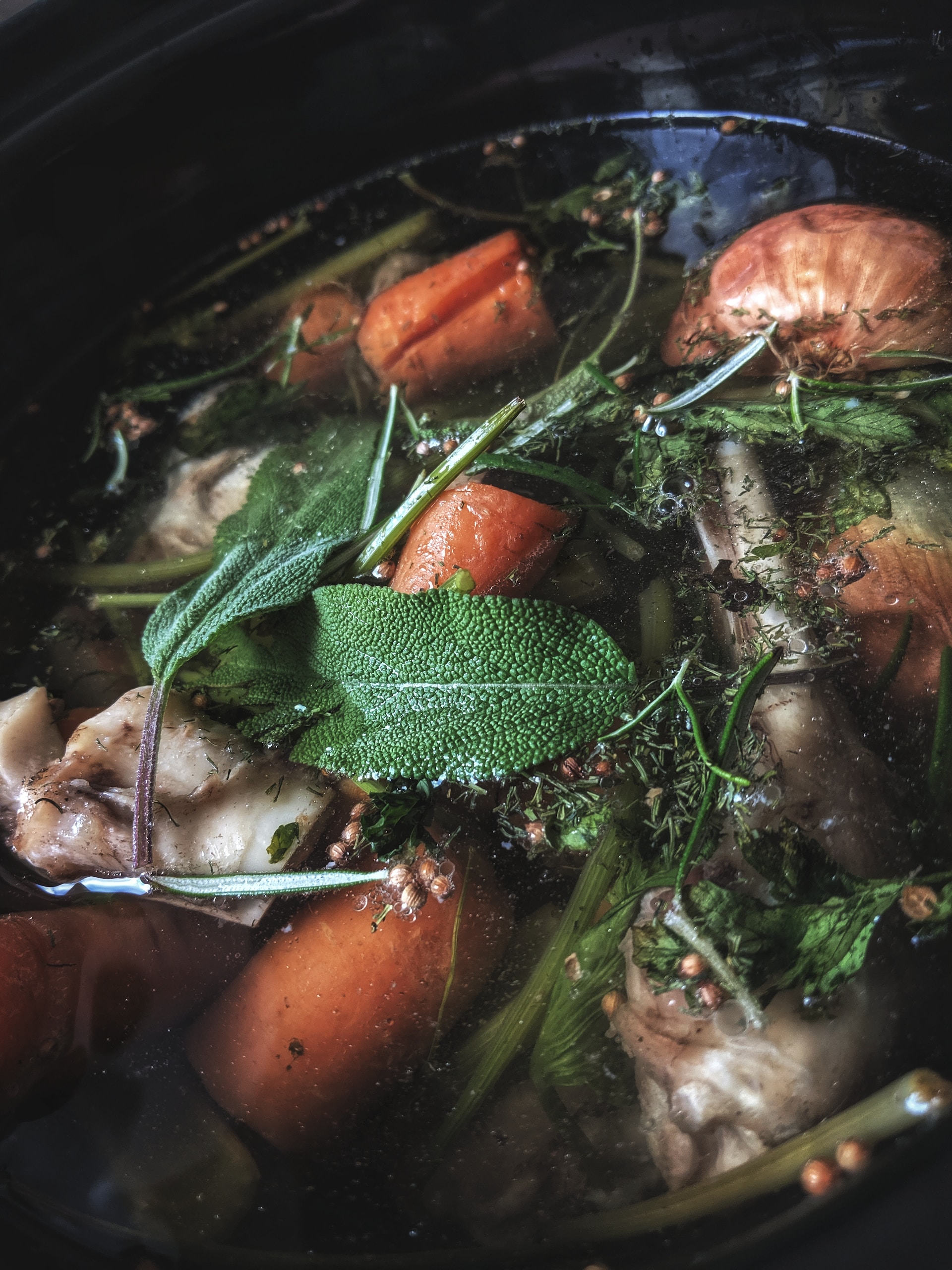Have you ever wondered how you would make your bone broth or why you would want to make bone broth for your dog? Well, look no further!
With just a few common cupboard ingredients, some bones from your meals, and (probably) the supervision of your four-legged friend, you can easily whip up the perfect dog bone broth in no time!
It doesn’t take a lot of work to make, and your dog will appreciate it!
- Bone broth for dogs is rich in nutrients like glycine, glucosamine, minerals, and collagen.
- Homemade bone broth can aid dogs' recovery from illness and improve food digestibility.
- To make broth, use bones with cartilage, apple cider vinegar, and cook on low heat for hours.
- It's crucial to remove all bones before feeding broth to dogs to avoid health hazards.
- Bone broth can be stored frozen for a year or refrigerated for 5 days in small portions.
Image credits: Unsplash
The information provided herein is for informational purposes only. Please refer to our disclaimer for more details..
What are the benefits of bone broth?
It’s common knowledge that bone broth may help dogs with a variety of problems. Making broth for dogs helps expose them to a range of nutrients that dogs need such as:
- Glycine – one of the amino acids which is great for your dog’s liver.
- Glucosamine – this helps keep your dog’s joints in good condition.
- Minerals – good for your dog’s immune system and general health.
- Collagen – great for your dog’s coat and skin.
Bone broth is incredibly versatile and can be helpful for dogs in many ways. Whether they need a pick-me-up following illness, or simply something tasty to water down their food to help make it more digestible (especially in the case of older dogs), there are many reasons to feed your dog bone broth.
Often, your dog will love bone broth so much, that it can even be used to tempt them into eating when they’ve been unwell! The bonus of this is that bone broth is a great addition to your dog food, to aid recovery and help them get back to their normal self as fast as possible.
Bone broth can be used to supplement your pet’s diet too, helping ensure that they obtain all the beneficial nutrients we’ve listed above.
How to make bone Broth for dogs step-by-step recipe
Image credits: Unsplash
Now we’ll go through our delicious yet simple bone broth recipe that your dog is sure to love! Don’t forget, to make your life easier, you can save time by using a slow cooker.
However, don’t fret if you don’t have one, you can also make the broth using a normal stove (it just takes a little bit more work).
In case you’re thinking ‘What is bone broth made of?‘ we’ve made a list below of the ingredients and equipment you need, so that you can prepare everything before getting started:
- Bones to make your broth (beef or poultry, use bones with a lot of cartilage)
- Pressure cooker (you can also do the slow cooking method which is the same method, just takes a bit more time)
- Apple Cider Vinegar
- A big pot
- A tablespoon for measuring
- A big spoon for mixing
- Plastic bags, ice trays or bags for storage
- Your favourite bone broth for dogs recipe (check!)
Now you’ve got everything you need to make them broth, let’s get started!
Step 1
Collect your bones!
We like to use chicken or beef, or a combination of the two. Try to go for bones from quality sources (beef marrow is great) and make sure there are lots of bones with cartilage to get the most out of your bone broth. You can also use bones that are leftover from your meals.
If you do use bones which are leftover from your food, don’t forget to rinse them off. This is important as it makes sure they are free of any sauce you may have eaten them with.
If you’re making it for two dogs, you might want to consider making an extra batch of broth. Don’t worry if you think you might make too much, we’ll explain how you can store it later.
Step 2
Put the bones in your big pot and cover your bones in a couple of inches of water. Then add a couple of tablespoons of raw apple cider vinegar.
You don’t need to fill up the pot with water, just a few inches is fine (this helps keep the broth nice and thick)
The acid property of vinegar helps draw out all the beneficial components of the bones we talked about later. Don’t worry, using such small amounts poses very few risks to your dog (and it will still taste great to them).
Step 3
Put your pot on the stove or set your simmer pot or slow cooker to low to allow it to simmer for a few hours. The cooking time varies depending on what you’re using, we’ve given some examples below:
- Stove – 12 hours at a low temperature.
- Instant pot – around 4 hours.
- Slow cooker – around 24 hours at a low temperature.
To get the most out of your broth, try to have it simmering rather than boiling.
Step 4
After the appropriate amount of time has passed, turn off the heat and allow time for the bone broth to cool a little. Then strain the broth, remove the bones, and add any meat back into the mixture.
Never give either cooked bones or raw bones to your dog. Giving bones to your dog can cause their teeth to break, or even the bones to get stuck or damage their gastrointestinal system.
If you want to give your dog something to chew, it’s better to check out dog treat recipes instead.
Step 5
Let the broth cool down to room temperature and then pour the broth into your storage container of choice. We’ve listed some examples below:
- Ice-cube trays for freezing.
- Plastic bags.
- Plastic boxes.
- Covered bowls.
How to store your broth
We recommend measuring out and then freezing the broth in small amounts for your dog. You can freeze the broth for around a year without a problem.
As we already mentioned, a good idea is to pour the broth into an ice cube tray before freezing, that way you
Alternatively, you can refrigerate the broth for about 5 days. Make sure that it’s appropriately covered so it cannot become contaminated by anything else in your fridge.
How much bone broth to give your dog
When feeding your dog anything new for the first time, it’s best to introduce it slowly to help decrease the risk of any adverse reactions. Naturally, small dogs don’t need as much dog broth compared to larger ones.
Start by giving them a few spoons mixed in their usual food, before slowly progressing over a few weeks to the full amount. Around 1oz per every 10lb of your dog’s weight is a good guide.
Chicken bone broth vs. beef bone broth
You might be thinking, is there a difference between chicken bone broth and beef broth? The answer is, that it doesn’t matter whether the bones you use come from a chicken or a cow, it depends on what you can get your hands on.
It’s more important that the bones are of good quality and not contaminated by anything (such as sauce if they’ve come from your meal).
FAQ
To finish, let’s go through some frequently asked questions about making bone broth for dogs.
Is homemade bone broth safe for dogs?
Yes, if made correctly, homemade bone broth is safe for dogs. It’s very important not to forget to take out the bones before feeding them to your dog and never give dogs cooked bones. Don’t worry, the cooking process itself will draw the minerals out of the bones.
What are the best bones to use for bone broth at home for dogs?
Chicken feet and marrow bone are popular choices, but it’s down to opinion on which type people tend to think is best. If your dog has a food allergy, it’s best to check with your veterinarian before making or giving them bone broth.
What ingredients to avoid in homemade bone broth for dogs?
Bone broth only requires the ingredients we’ve listed in this article. That means, that anything extra is unnecessary and should be avoided. It’s especially important not to forget to remove the bones before giving it to your dog.
Why add apple cider vinegar to bone broth recipe for dogs?
Apple cider vinegar has a low pH and helps break down the important nutrients (particularly collagen) from the bone so that they are accessible for your dog. Forgetting to add the vinegar to the broth would mean that it’s unlikely to contain as much collagen as it could.
As we mentioned earlier, adding vinegar to the broth is nothing to worry about, and won’t affect its taste or how much your dog likes it.






-3
0